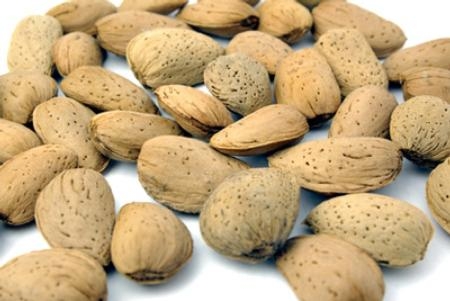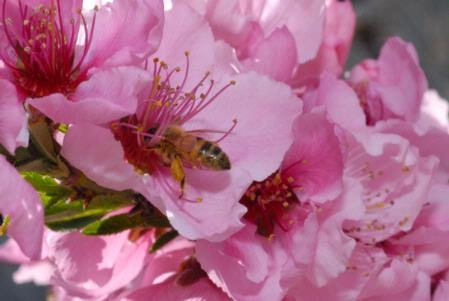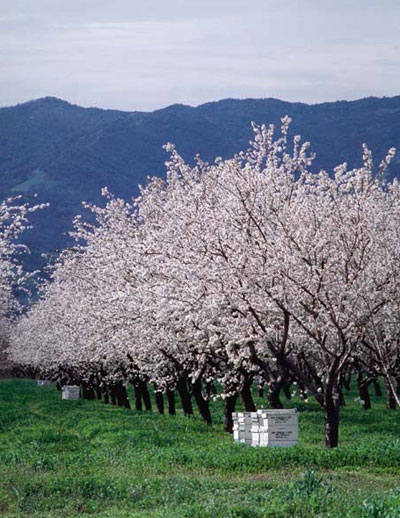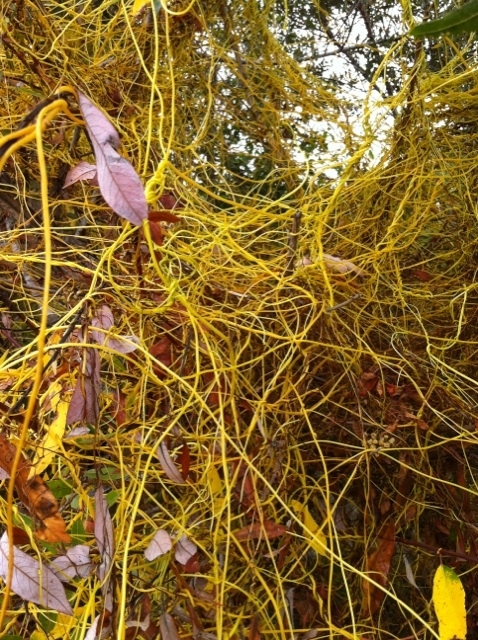Posts Tagged: almonds
Japanese dodder found in Santa Barbara County
Olive fruit fly back
Julie Johnson, Orland Press-Register
There are considerably more olive fruit flies this year than at this time last year, said Bill Krueger, UC Cooperative Extension farm advisor for Tehama and Glenn counties. "When it comes to the olive fruit fly we really don't understand everything we need to know, and this is just one example," he said.
Nonpareils' arrival marks start of big almond harvest
Tim Hearden, Capital Press
Nonpareil almonds have been coming out of the orchards in California, ushering in the harvest of what's expected to be a record 1.95 billion-pound almond crop this year. Hullers and shellers in the San Joaquin Valley got their first loads on Aug. 19. "I think all of our orchards look pretty good," said Rick Buchner, a University of California Cooperative Extension farm advisor. "It's a good crop, really clean."
It's getting more expensive to grow almonds
The cost of growing almonds is rising, according to a report in the Bakersfield Californian based on a recent UC cost study.
The 2011 cost and return study Sample Costs to Establish an Orchard and Produce Almonds found that it takes about $2,862 per acre to produce almonds in the northern San Joaquin Valley, up nearly 20 percent from $2,393 in 2006.
An updated report on almond production in the southern San Joaquin Valley is not yet available. The last time the university evaluated almond operations there was 2003, when the cost was $2,155 per acre, the story said.
UC Cooperative Extension farm advisor in San Joaquin County, Paul Verdegaal, told Californian reporter Courtenay Edelhart that it's more and more expensive to grow almonds because water, energy, labor, equipment and other production costs are rising.
"The higher yields and closer plantings are what's saving a lot of the growers down there where you are (in Kern County), and better management to run things more efficiently," Verdegaal was quoted.

South valley farmers typically enjoy high almond yields because of their dry spring.
A couple of brief takes on bees
The KQED blog "News Fix" included a quick update yesterday about the California deep freeze that fizzled.
"It didn't snow in San Francisco — not really — or anywhere else near sea level late last week. Boo hoo. Let's get over it," wrote Dan Brekke.
But it was cold, so Brekke spoke to UC Cooperative Extension farm advisor Joe Connell about the effect of the cool February temperatures on California's almond crop.
Honeybees don’t like to fly in rain or freezing temperatures, Connell told him, so almond pollination has been delayed.
In other bee news, Southwest Airlines in-flight magazine Spirit highlighted a surprising fact: A bee produces just one-twelfth of a teaspoon of honey in its lifetime.
Each worker bee will fly 37,400 miles from flower to flower gathering nectar for that tiny bit of sweetener.
The queenbee's role was detailed by UC Davis honeybee expert Eric Mussen: “While the queen lays more than 1,000 eggs a day, other bees are busy feeding her, guarding the hive, and fanning the nectar with their wings to extract moisture, turning it into honey.”

A honeybee in a nectarine blossom.
Newspaper turns to UCCE for commentary on almond bloom
Even though the earliest almonds are already starting to bloom, this week's rain storms don't spell ruin for California farmers, according to UC Cooperative Extension farm advisor Joe Connell.
Connell shared his thoughts about bloom with reporter Heather Hacking of the Chico Enterprise Record. He said he has 80 years of bloom data in his office, and the date of first bloom is anywhere from the last week in January to the first week of March.
Because bees were in almond orchards last week, before the rain, the pollen gathered will help strengthen hives and prepare the bees for the work of the main almond bloom, the farm advisor said.
If the storms bring hail, however, it can disastrous for growers. Hail was reported in some areas Wednesday, which is not good, Connell told the reporter. The hail can damage open flowers and knock down nutlets; cold temperatures can cause frost damage.

Almond bloom is getting underway in California.
2010 was an excellent year for almonds
California almonds harvested in 2010 are expected to amount to 1.65 billion pounds or more, according to an article by Associated Press reporter Jeff Nachtigal. The story was picked up by many national publications, including the New York Times and the CBS News website.
The sizable almond crop is being met with strong worldwide demand and relatively high prices.
"The nut crops in general are looking good in California," UC farm advisor emeritus John Edstrom was quoted in the story.
UC Davis Cooperative Extension almond specialist Bruce Lampinen told the reporter that improved agricultural techniques used by California's 6,000 almond growers - such as planting trees closer together, cutting back on pruning and knocking off "mummies" during the winter to control navel orangeworm - have helped boost production.
But, the almond industry is not without its challenges.
- UC Davis entomologist Eric Mussen told the reporter that farmers are still concerned about major honeybee die-offs, which have doubled the cost of renting bees for pollination in the past five years.
- Water shortages are also a concern for some producers, according to Almond Board chair Mike Mason.
California almond growers produce 100 percent of the U.S. crop, supplying 100 percent of the domestic market, and 80 percent of the world market, said an Western Farm Press article about the bumper almond crop.

Improved almond production techniques have helped grow the industry.


